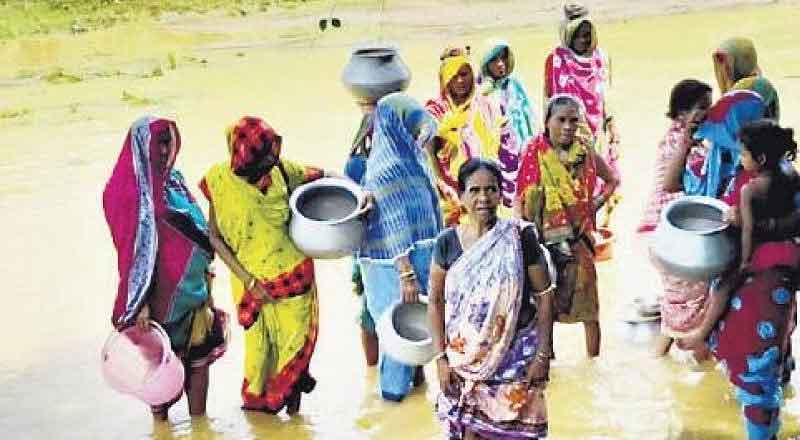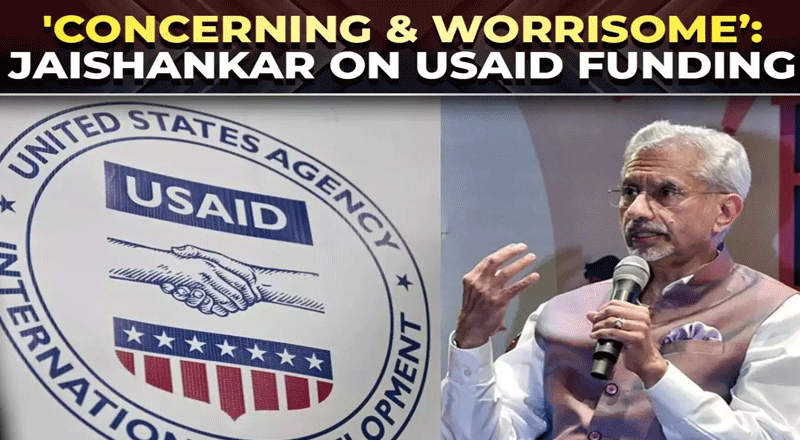- Nearly 350 million children are struggling with “high or extremely high-water scarcity” in South Asia, the highest number among all regions in the world- a report by the United Nations.
- The report also noted how water scarcity affects a child’s well-being and growth and causes food insecurity, malnutrition, and a number of other diseases.
- The eight-nation region – Afghanistan, Bangladesh, Bhutan, India, Nepal, Maldives, Pakistan, and Sri Lanka, is home to more than one-quarter of the world’s children.
- Across South Asia, 70 million children live in drought-prone regions where aquifers are severely over-pumped, according to the report based on analysis by UNICEF.
- The Indo-Gangetic Basin which covers countries like Pakistan, India, Bangladesh, and Nepal is the “most heavily exploited aquifer in the world,” the UN report noted.
- “At current rates of progress, South Asia will more than halve the children who do not have basic drinking water from 45 million to 18 million,” said the UNICEF report.
- Last year, 45 million children lacked access to basic drinking water services in South Asia, more than any other region in the world.
Nearly 350 million children are struggling with “high or extremely high-water scarcity” in South Asia, the highest number among all regions in the world, according to a report by the United Nations children’s agency, on Nov 13. Severe water scarcity has also worsened due to the impacts of climate change.
The report also noted how water scarcity affects a child’s well-being and growth and causes food insecurity, malnutrition, and a number of other diseases. “A staggering 347 million children under 18 are exposed to high or extremely high water scarcity in South Asia, the highest number among all regions in the world,” said UNICEF in its recent report.
While the eight-nation region – Afghanistan, Bangladesh, Bhutan, India, Nepal, Maldives, Pakistan, and Sri Lanka – is home to more than one-quarter of the world’s children, it also has only four percent of global renewable water.
According to the report, climate change is adding to the stress by disrupting weather patterns and rainfall, which leads to unpredictable water availability, and further exacerbates conditions caused by the over-extraction of groundwater.
Across South Asia, 70 million children live in drought-prone regions where aquifers are severely over-pumped, according to the report based on analysis by UNICEF. The report also attributed poor water quality, lack of water, and mismanagement such as over-pumping of aquifers as some of the reasons for water scarcity in South Asia.
The Indo-Gangetic Basin which covers countries like Pakistan, India, Bangladesh, and Nepal is the “most heavily exploited aquifer in the world,” the UN report noted. “Safe water is a basic human right, yet millions of children in South Asia don’t have enough to drink in a region plagued by floods, droughts, and other extreme weather events, triggered increasingly by climate change,” said Sanjay Wijesekera, UNICEF Regional Director for South Asia, in a statement. It added, “When village wells go dry, homes, health centers, and schools are all affected. With an increasingly unpredictable climate, water scarcity is expected to become worse for children in South Asia.”
“At current rates of progress, South Asia will more than halve the children who do not have basic drinking water from 45 million to 18 million,” said the UNICEF report.
In 2022, UNICEF’s analysis also showed that the eight-nation region had the highest number of children – 169 million children – under 18 years exposed to extreme water vulnerability among all regions across the world.
Last year, 45 million children lacked access to basic drinking water services in South Asia, more than any other region in the world.
South Asia, according to the recent report, was followed by Eastern and Southern Africa and West and Central Africa where 130 million and 102 million children, respectively, are at risk from severe water scarcity.
(With inputs from agencies)





